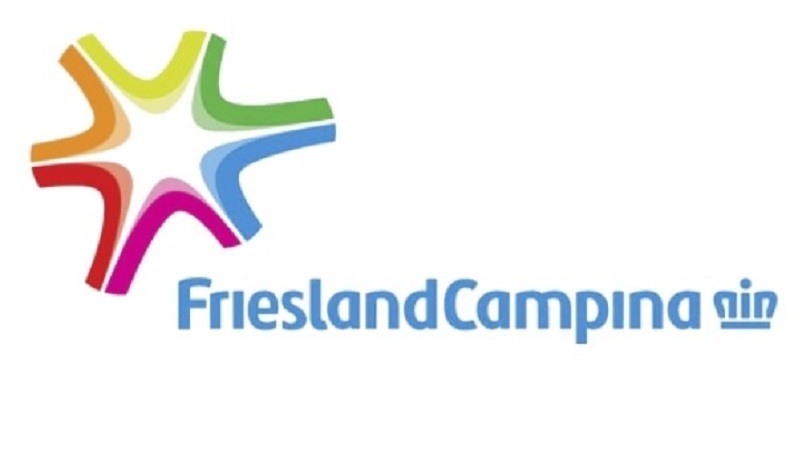Economy
3 Big Hooks Businesses Use to Attract and Retain Customers

When you take a look around you, you’re always targeted by ads, offers and limited time discounts. They’re in print, on buildings, and everywhere you go online; but what are the most effective methods used by the most lucrative brands? And how can we expect them to evolve in the years ahead? Let’s take a closer look at 3 notable examples of popular techniques used to attract and retain customers.
Remove friction, increase sales
Netflix rose to the top of the streaming world in large part due to their willingness to offer 30-day free trials all over the world. The clever thing about this move is that they knew that after 30 days, you’ll be interested in many shows and desperate to continue watching.
There was, however, the frictional element of the first payment which needed to be removed if the funnel was going to work as intended. Setting up a payment plan along with all payment details is often a complex and time-consuming task. That’s why the Netflix team kept everything simple by taking payment details electronically as part of the registration process for the free trial. They then set the paid subscription to automatically begin after 30 days, while continuing to learn about the user’s likes and dislikes during that window.
By having an entire month of user data, Netflix was able to retain millions of customers by recommending shows they knew they would like. The fact that all a user had to do was simply continue watching meant that the transition to paid use was hardly noticed by them. Now that they have attained market dominance, Netflix has removed the free trial options.
Given Netflix’s unstable position, it’s possible that trials will officially become a thing of the past. Instead, there’s talking about a cheaper ad-supported version designed to steer people away from disruptive entrants like Disney+ or HBO Max.
Who doesn’t love free stuff?
No deposit bonuses that are offered by online casinos are another great example of schemes designed to attract new potential customers. By offering things like free spins, online casinos are attempting to entice players to start playing in their casinos. Because they don’t have to deposit money to activate the bonus, they will feel like it won’t hurt to try.
Casinos want players to get a taste of a particular game or the casino itself, and since the selection of products and services today is practically endless, one must try to sway the customer to their side and stand out. With savvy players always looking for new ways to have fun online, we can continue to expect a raft of new types of bonuses to keep flowing.
When points matter
The cost of living crisis and inflation in many markets means that household budgets are being stretched in a way they haven’t been for a long time. Supermarkets have come up with their own ingenious way of retaining customers. In-store offers and discounts have long been the norm in every type of store — not just supermarkets — so many shops needed something to stand out from the rest of the market.
Target’s loyalty program was the market leading initiative in this space. The company used an in-depth knowledge of each shopper’s habits to offer personalized discounts. This gave rise to store loyalty cards and points systems where the more a shopper bought, the more they would earn in loyalty points.
Nowadays, shoppers can redeem their points for discounts applied in store, extra products at the checkout, or sometimes even products and services from third parties. The idea here is to turn an everyday action (paying for clothes and groceries) into something which leads to a desirable reward, in addition to the products themselves. Stores are then able to produce greater brand buy-in, while customers feel valued and have an attachment to a particular chain, regardless of how similar the rest of the market is.
These types of offers are not likely to go away any time soon and are set to gather pace in the 12 months that lie ahead. Because of the unstable situation around the world right now, we can safely expect to see supermarkets double down on their offers and loyalty schemes in an effort to maintain their customer bases.
Now that you’ve heard our thoughts on some of the common methods for retaining customers, can you identify if you’re “guilty” of some of them?
Economy
Nigerian Stocks Close 1.13% Higher to Remain in Bulls’ Territory

By Dipo Olowookere
The local stock market firmed up by 1.13 per cent on Friday as appetite for Nigerian stocks remained strong.
Investors reacted well to the 2026 budget presentation of President Bola Tinubu to the National Assembly yesterday, especially because of the more realistic crude oil benchmark of $64 per barrel compared with the ambitious $75 per barrel for 2025. This year, prices have been between $60 and $65 per barrel.
Business Post observed profit-taking in the commodity and energy sectors as they respectively shed 0.14 per cent and 0.03 per cent.
But, bargain-hunting in the others sustained the positive run, with the consumer goods index up by 3.82 per cent.
Further, the industrial goods space appreciated by 1.46 per cent, the banking counter improved by 0.08 per cent, and the insurance industry gained 0.04 per cent.
As a result, the All-Share Index (ASI) increased by 1,694.33 points to 152,057.38 points from 150,363.05 points and the market capitalisation chalked up N1.080 trillion to finish at N96.937 trillion compared with Thursday’s closing value of N95.857 trillion.
A total of 34 shares ended on the advancers’ chart, while 24 were on the laggards’ log, representing a positive market breadth index and bullish investor sentiment.
Austin Laz gained 10.00 per cent to close at N2.42, Union Dicon also jumped 10.00 per cent to N6.60, Tantalizers increased by 9.80 per cent to N2.69, Aluminium Extrusion improved by 9.78 per cent to N12.35, and Champion Breweries grew by 9.71 per cent to N16.95.
Conversely, Sovereign Trust Insurance dipped by 7.42 per cent to N3.87, Royal Exchange lost 6.84 per cent to trade at N1.77, Omatek slipped by 6.84 per cent to N1.09, Eunisell depreciated by 5.88 per cent to N80.00, and Eterna dropped 5.63 per cent to close at N28.50.
Yesterday, traders transacted 1.5 billion units worth N21.8 billion in 25,667 deals compared with the 839.8 million units sold for N32.8 billion in 23,211 deals in the preceding session, showing a surge in the trading volume by 76.61 per cent, an uptick in the number of deals by 10.58 per cent, and a shrink in the trading value by 33.54 per cent.
Economy
FrieslandCampina, Two Others Erase N26bn from NASD OTC Bourse

By Adedapo Adesanya
Three stocks stretched the bearish run of the NASD Over-the-Counter (OTC) Securities Exchange by 1.21 per cent on Friday, December 19, with the market capitalisation giving up N26.01 billion to close at N2.121 billion compared with the N2.147 trillion it ended a day earlier, and the NASD Unlisted Security Index (NSI) dropping 43.47 points to 3,546.41 points from 3,589.88 points.
The trio of FrieslandCampina Wamco Nigeria Plc, Central Securities Clearing System (CSCS) Plc, and NASD Plc overpowered the gains printed by four other securities.
FrieslandCampina Wamco Nigeria Plc lost N6.00 to sell at N54.00 per unit versus N60.00 per unit, NASD Plc shrank by N3.50 to N58.50 per share from N55.00 per share, and CSCS Plc depleted by N2.91 to N33.87 per unit from N36.78 per unit.
On the flip side, Air Liquide Plc gained N1.01 to close at N13.00 per share versus N11.99 per share, Golden Capital Plc appreciated by 70 Kobo to N7.68 per unit from N6.98 per unit, Geo-Fluids Plc added 39 Kobo to sell at N5.50 per share versus N5.11 per share, and IPWA Plc rose by 8 Kobo to 85 Kobo per unit from 77 Kobo per unit.
During the trading day, market participants traded 1.9 million securities versus the previous day’s 30.5 million securities showing a decline of 49.3 per cent. The value of trades went down by 64.3 per cent to N80.3 million from N225.1 million, but the number of deals jumped by 32.1 per cent to 37 deals from 28 deals.
Infrastructure Credit Guarantee Company (InfraCredit) Plc finished the session as the most active stock by value on a year-to-date basis with 5.8 billion units valued at N16.4 billion, followed by Okitipupa Plc with 178.9 million units transacted for N9.5 billion, and MRS Oil Plc with 36.1 million units traded for N4.9 billion.
The most active stock by volume on a year-to-date basis was still InfraCredit Plc with 5.8 billion units worth N16.4 billion, trailed by Industrial and General Insurance (IGI) Plc with 1.2 billion units sold for N420.7 million, and Impresit Bakolori Plc with 536.9 million units traded for N524.9 million.
Economy
Naira Crashes to N1,464/$1 at Official Market, N1,485/$1 at Black Market

By Adedapo Adesanya
It was not a good day for the Nigerian Naira at the two major foreign exchange (FX) market on Friday as it suffered a heavy loss against the United States Dollar at the close of transactions.
In the black market segment, the Naira weakened against its American counterpart yesterday by N10 to quote at N1,485/$1, in contrast to the N1,475/$1 it was traded a day earlier, and at the GTBank forex counter, it depreciated by N2 to settle at N1,467/$1 versus Thursday’s closing price of N1,465/$1.
In the Nigerian Autonomous Foreign Exchange Market (NAFEX) window, which is also the official market, the nation’s legal tender crashed against the greenback by N6.65 or 0.46 per cent to close at N1,464.49/$1 compared with the preceding session’s rate of N1,457.84/$1.
In the same vein, the local currency tumbled against the Euro in the spot market by N2.25 to sell for N1,714.63/€1 compared with the previous day’s N1,712.38/€1, but appreciated against the Pound Sterling by 73 Kobo to finish at N1,957.30/£1 compared with the N1,958.03/£1 it was traded in the preceding session.
The market continues to face seasonal pressure even as the Central Bank of Nigeria (CBN) is still conducting FX intervention sales, which have significantly reduced but not remove pressure from the Naira. Also, there seems to be reduced supply from exporters, foreign portfolio investors and non-bank corporate inflows.
President Bola Tinubu on Friday presented the government’s N58.47 trillion budget plan aimed at consolidating economic reforms and boosting growth.
The budget is based on a projected crude oil price of $64.85 a barrel and includes a target oil output of 1.84 million barrels a day. It also projects an exchange rate of N1,400 to the Dollar.
President Tinubu said inflation had plunged to an annual rate of 14.45 per cent in November from 24.23 per cent in March, while foreign reserves had surged to a seven-year high of $47 billion.
Meanwhile, the cryptocurrency market was dominated by the bulls but it continues to face increased pressure after million in liquidations in previous session over accelerating declines, with Dogecoin (DOGE) recovering 4.2 per cent to trade at $0.1309.
Further, Ripple (XRP) appreciated by 3.9 per cent to $1.90, Cardano (ADA) rose by 3.5 per cent to $0.3728, Solana (SOL) jumped by 3.4 per cent to $126.23, Ethereum (ETH) climbed by 2.9 per cent to $2,982.42, Binance Coin (BNB) gained 2.0 per cent to sell for $853.06, Bitcoin (BTC) improved by 1.7 per cent to $88,281.21, and Litecoin (LTC) soared by 1.2 per cent to $76.50, while the US Dollar Tether (USDT) and the US Dollar Coin (USDC) traded flat at $1.00 each.
-

 Feature/OPED6 years ago
Feature/OPED6 years agoDavos was Different this year
-
Travel/Tourism9 years ago
Lagos Seals Western Lodge Hotel In Ikorodu
-

 Showbiz3 years ago
Showbiz3 years agoEstranged Lover Releases Videos of Empress Njamah Bathing
-

 Banking7 years ago
Banking7 years agoSort Codes of GTBank Branches in Nigeria
-

 Economy3 years ago
Economy3 years agoSubsidy Removal: CNG at N130 Per Litre Cheaper Than Petrol—IPMAN
-

 Banking3 years ago
Banking3 years agoFirst Bank Announces Planned Downtime
-

 Banking3 years ago
Banking3 years agoSort Codes of UBA Branches in Nigeria
-

 Sports3 years ago
Sports3 years agoHighest Paid Nigerian Footballer – How Much Do Nigerian Footballers Earn












